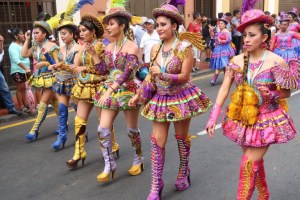
Our porters slipped away from camp before sunrise. We were left to wait in the dark before we could commence the final day of the Inca Trail. Why were we in this situation? Because the train operator had changed their schedules, and the porters needed to get to the nearest station earlier than they used to do.
When I did the Inca Trail in 2000 I didn’t have to endure this final-day early start, but it wasn’t ever an easy hike. The reward, though, was just as worth it almost 20 years later.
Machu Picchu – the reason most people come to Peru. There are two ways to get here; hiking various trails (the Inca Trail being the most popular), or taking the train from Ollantaytambo. All itineraries make use of the hugely expensive train from Machu Picchu. I’ve given Mid-range travellers a day-time ride to Puno (following the rave review from friends we travelled with) and Luxury travellers get to enjoy the additional journey towards Arequipa. Budget travellers? Well, they just get a bargain.
I was tear-gassed in Arequipa, but that’s because I managed to get between protestors and supporters during a presidential visit. It’s well-worth the detour though, and I’m sure you won’t have the same tear-inducing as I. Lima was also a much more enjoyable experience this time around, partly because this time we explored the old part of the city rather than just hang out in the bars of Miraflores, and partly because we were there at the same time as a ridiculously colourful festival.
With online bus and train schedules, this itinerary was easy to plan. Peru has also become much easier to travel around – although the Nazca Lines require long bus journeys to and from. There’s a certain hop-on hop-off bus operator that I haven’t recommended because, in my experience, they’re exploitative, and because the local bus operators do a great job.
